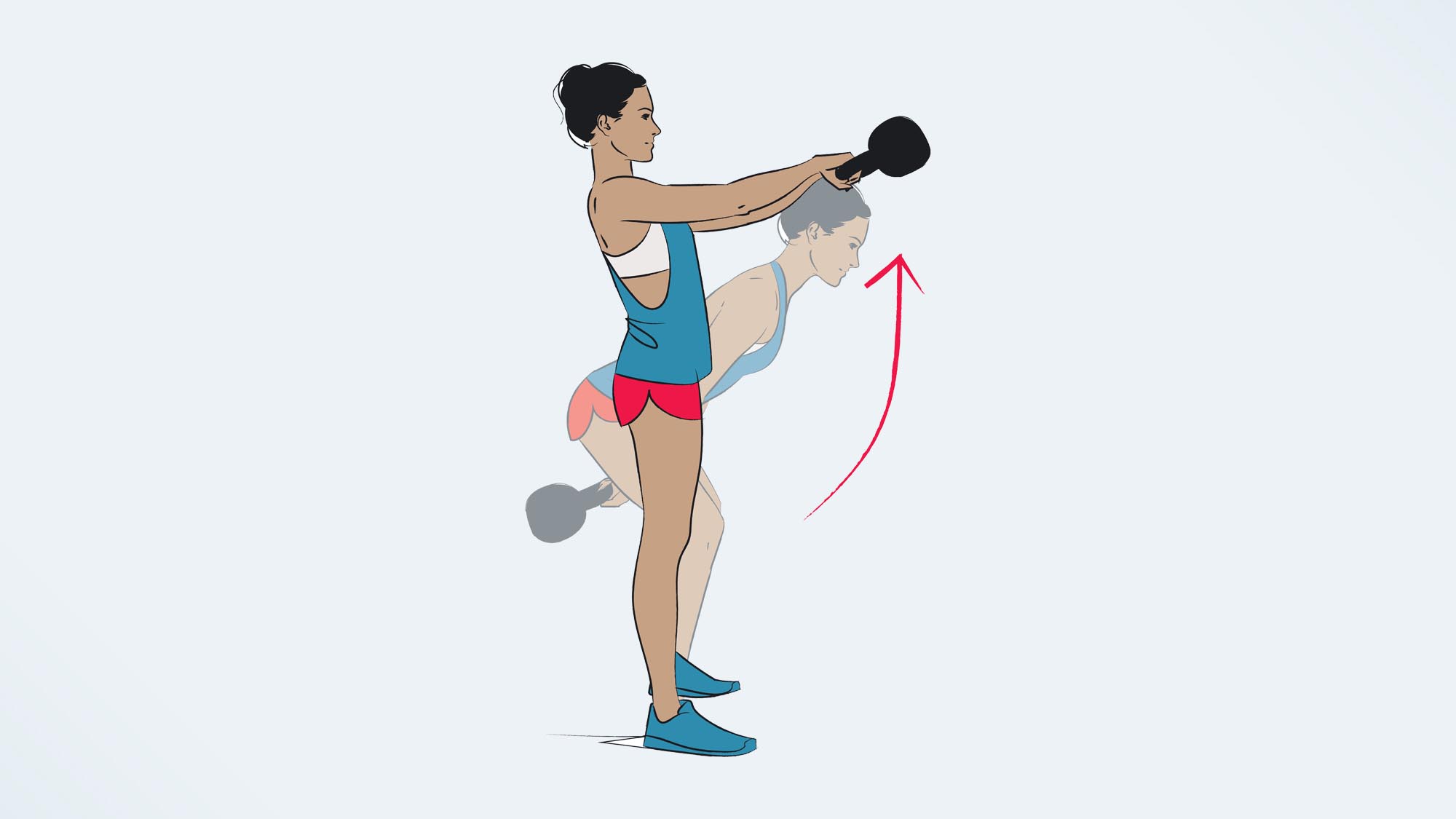
Here’s what happened when I did American kettlebell swings every day for a week — and it’s not a spoiler that my entire body went through the wringer to get this fitness challenge under my belt.
Before I go on, It’s crucial to mention that we do these challenges at Tom’s Guide to report on our experiences, but we don’t necessarily encourage others to go ahead and do the same. What works for me might not be for you, but if you fancy trying it yourself, I detail my experiences below.
A rule of thumb, try to rest muscle groups on alternate days. Your muscles can’t repair and grow if they’re not allowed to recover, so avoid overtraining, as you could get injured; this is especially true when you strength train and lift heavy weights like the best adjustable dumbbells, kettlebells or barbells.
American vs Russian kettlebell swings
American kettlebell swings are like the annoying younger sibling who wants to go one better than you. Like Russian kettlebell swings, they engage most major muscle groups, including your core and the posterior chain muscles responsible for posture — the lower back, glutes, hips and hamstrings.
But this variation requires you to swing the weight above your head rather than up to shoulder height, demanding more shoulder, back and core engagement to stabilize the weight as it travels overhead. The move also raises your heart rate, making it the perfect addition to strength and conditioning programs.
How to do an American kettlebell swing

Switch out the kettlebell for dumbbells if you need to. Here’s how to do a kettlebell swing in more detail.
- Stand with feet shoulder-width apart and kettlebell between your legs.
- Softly bend your knees, lock them in place, engage your core muscles and set your shoulders back and down.
- Grip the weight with both hands, then swing the kettlebell back between your legs, sending your hips behind you with a flat back.
- As the kettlebell moves upwards, engage your glutes and snap your hips at the top with arms outstretched.
- Drive the weight above your head and squeeze your shoulders.
- Allow the kettlebell to travel back down and between your legs.
I did 90 American kettlebell swings a day for one week — here’s what happened
This isn’t a challenge I’ll repeat, but it made for an interesting journey. Read on to see why.
Day 1
I love American kettlebell swings. Eager to get started, I settled on 4 sets of 20 reps and a set of 10. I usually lift 20kg or slightly more for kettlebell swings, but err on the side of caution with Americans (the exercise, not the people), so, surprisingly, the heavier weight felt comfortable.
American kettlebell swings are like the annoying younger sibling who always wants to go one better than you
Around the halfway point on the first day, I had to do an engagement check-in, which is when I quickly scan to ensure I contract my muscles properly. Another rule of thumb — the core should be tight with arms locked out overhead and plenty of full-body activation, not just your core.
I noticed a slight pull in my hamstrings and had to work hard to generate the power from the right place — the hips, glutes and core — with solid hip-hinge movement driving the weight.
With the first day done and dusted, I’m feeling cooked.
Days 2 & 3
American kettlebell swings require a greater range of motion, ideal for metabolic conditioning sessions like CrossFit or endurance workouts for Hyrox prep. This variation is also more tiring than its Russian counterpart, so I found it harder to keep my form tight for high reps, taking me longer to complete.
Despite not adding other exercises to the mix, my fitness tracker reported my heart rate jumping high, and I felt pretty sweaty afterward. By day three, my hamstrings, core, shoulders and lower back were on fire but not in a concerning way — just pesky DOMS calling my name again.
Days 4 & 5

The rep count was beginning to feel pretty tedious, but I wasn’t experiencing fatigue or undue pain, so the challenge continued. By day five, I was more familiar with the movement pattern and decided to try a heavier weight.
I practice American kettlebell swings in CrossFit, but as I mentioned, I err on the side of caution because I don’t do them often enough. Now that it felt more comfortable, I broke down reps into 10 per set, focusing less on building endurance and more on strength and form.
Days 6 & 7
The transition from a lighter endurance effort to heavier weights was affecting my grip, despite using chalk. If you don’t do kettlebell swings often, I recommend checking out how to hold a kettlebell properly here.
On the final days, I took it slower and reset every 10 reps to readjust my grip on the bell; it just shows how sweaty the exercise can get.
Although the move could strengthen your back muscles, overdoing American swings could strain them. I urge anyone trying them for the first time to learn about engaging your core, and why it matters. Doing so could prevent nasty injuries and improve the chances of feeling the movement in the muscles that matter.
Verdict
Result — I successfully avoided dropping the weight on my head throughout the week. But I recommend lifting a lighter weight and practicing your hip snap when you start American kettlebell swings, particularly as holding the weight overhead can be nerve-wracking.
Of course, I couldn’t see a physical difference after one week, but I felt strong, and my muscles torched. Despite feeling good, it’s not a challenge I plan to repeat soon, and I needed a good rest. Any excuse for a massage, right?
My parting advice for anyone trying high reps of American kettlebell swings is to focus on driving your biceps behind your ears and keeping your forearms active and wrists straight to support the bell with control.
Get it right, and the payoff is worth it. Some research shows that regular kettlebell training improves explosive strength and power. Practicing your hip-hinge pattern and strengthening your posterior chain muscles could also translate over to moves like deadlifts.
Until the next time, kettlebells.






